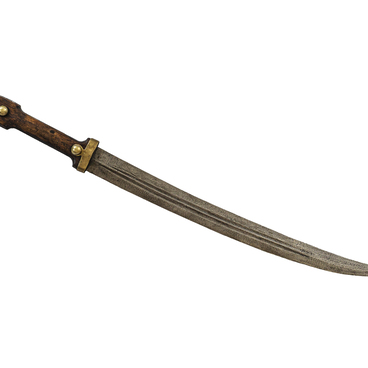The word “compass” comes from the Italian “compassare”, which means “to measure with steps”. The device helps to navigate by indicating the magnetic poles of the earth and the four winds. The magnetic compass hand turns freely around its axis and is located along the magnetic field lines.
The first compass was invented in China, it was called the “Chinese needle”. It was used to find the way in a desert. The compass appeared in Europe in the 12th–13th centuries. At first, it was a magnetic arrow, fixed on a cork, which was lowered into a container filled with water. In the water, the cork and the arrow could freely rotate and orient themselves in the right way. In the early fourteenth century, the Italian Flavio Gioia perfected the compass: thus, a device similar to the modern one appeared.
Over time, the compass had various modifications. One of them was the angular measuring device “Boussole”, presented in the exhibition. Geologists use this device to measure angles during field surveys. Boussole differs from the usual compass by the presence of a rotating lens. It can be used to determine the azimuth, that is, the angle between the North and the required direction on the ground. The scale of a boussole is directed counterclockwise, which makes it easier to calculate magnetic azimuths. On the bottom of the boussole there are notches to the left and right — from zero to 90 degrees.
The displayed compass is made of brass and is well preserved. Neither the instrument itself nor its leather case has marks or branding. According to the shape of the compass, researchers assumed that it could have been made by the Leningrad factory “Geologorazvedka”. Most likely, this compass is one of the early models that the factory produced in the 1930s.
On August 1, 1930, in Leningrad, the United Central Workshops of Precision and Forest Instrumentation “Geolestochpribor” were organized. No later than 1932 they were transformed into an experimental plant “Geologorazvedka”.
The compass belonged to F. A. Maslennikov — a Civil War veteran. In 1915, he graduated from the Mechanical Department of the Saint Petersburg Polytechnic Institute, and in 1918, he was appointed as commander of an engineering battalion and divisional engineer of the Second Ural Division. Maslennikov also took part in combat operations in the 29th Infantry Division and was acquainted with the division commander Vasily Blucher.
The first compass was invented in China, it was called the “Chinese needle”. It was used to find the way in a desert. The compass appeared in Europe in the 12th–13th centuries. At first, it was a magnetic arrow, fixed on a cork, which was lowered into a container filled with water. In the water, the cork and the arrow could freely rotate and orient themselves in the right way. In the early fourteenth century, the Italian Flavio Gioia perfected the compass: thus, a device similar to the modern one appeared.
Over time, the compass had various modifications. One of them was the angular measuring device “Boussole”, presented in the exhibition. Geologists use this device to measure angles during field surveys. Boussole differs from the usual compass by the presence of a rotating lens. It can be used to determine the azimuth, that is, the angle between the North and the required direction on the ground. The scale of a boussole is directed counterclockwise, which makes it easier to calculate magnetic azimuths. On the bottom of the boussole there are notches to the left and right — from zero to 90 degrees.
The displayed compass is made of brass and is well preserved. Neither the instrument itself nor its leather case has marks or branding. According to the shape of the compass, researchers assumed that it could have been made by the Leningrad factory “Geologorazvedka”. Most likely, this compass is one of the early models that the factory produced in the 1930s.
On August 1, 1930, in Leningrad, the United Central Workshops of Precision and Forest Instrumentation “Geolestochpribor” were organized. No later than 1932 they were transformed into an experimental plant “Geologorazvedka”.
The compass belonged to F. A. Maslennikov — a Civil War veteran. In 1915, he graduated from the Mechanical Department of the Saint Petersburg Polytechnic Institute, and in 1918, he was appointed as commander of an engineering battalion and divisional engineer of the Second Ural Division. Maslennikov also took part in combat operations in the 29th Infantry Division and was acquainted with the division commander Vasily Blucher.



